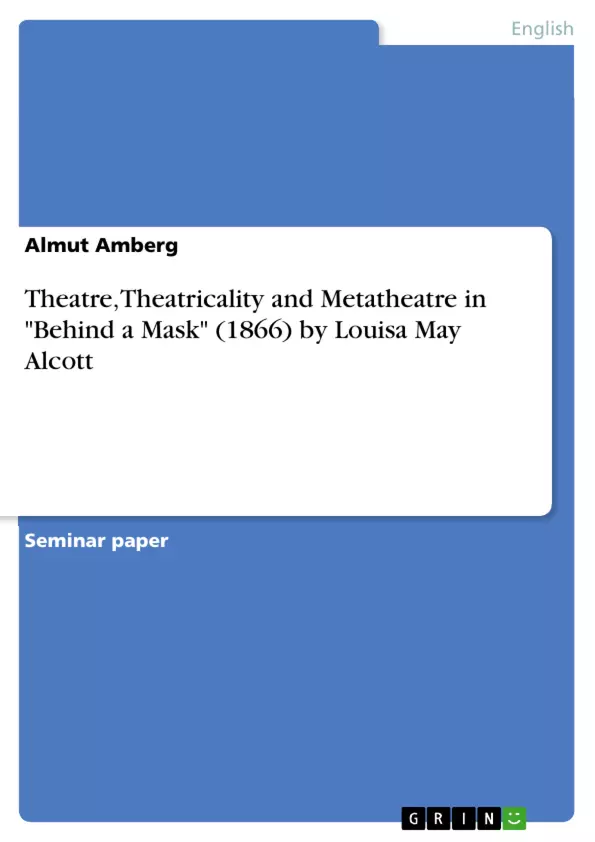The novella "Behind a Mask" was originally published under a pseudonym by the well-known "Little Women" author Louisa May Alcott for its deviation from her better known work. Combining elements of a mystery, the Gothic novel and modern thrillers, Alcott created the story of the actress Jean Muir whose acting abilities alone are her key to social upward mobility. The elements of acting, staging and performing are immanent in the novella and aspects of masking, theatre and theatricality as well as metatheatrical instances are the driving force of the plot. This paper analyses these examples and comes to the conclusion that the deceiving actress is a role forced upon the ambitious female by Victorian society.
Inhaltsverzeichnis (Table of Contents)
- Introduction
- Theatre in Behind a Mask
- The Stage - Making the Home a Theatrical Space
- The Mask - Playing the Leading Role
- The Play-Acting with the Ensemble
- Conclusion
Zielsetzung und Themenschwerpunkte (Objectives and Key Themes)
This essay aims to explore the role of theatre, acting, and staging in Louisa May Alcott's novella Behind a Mask (1866). It examines how theatricality permeates the story, transforming characters into actors and the domestic home into a theatrical space. The essay focuses on three key elements: the stage, the leading role, and the staging of the play, highlighting how theatricality goes beyond mere deception and reveals underlying social and cultural themes.
- The theatricality of everyday life and domestic settings
- The association of theatre with deception and the "female" in Victorian society
- The complex relationship between authenticity and performance in Jean Muir's character
- The use of theatrical devices, such as entrances and exits, to enhance the narrative and create dramatic tension
- The exploration of social roles and conflicts within the Coventry family and their interactions with Jean Muir
Zusammenfassung der Kapitel (Chapter Summaries)
The introduction explores the theme of theatricality in Behind a Mask, highlighting the ambiguous nature of Jean Muir's character and the story's connection to theatre. It discusses the historical context of theatre and its association with deception, particularly for women. The essay then focuses on the theatrical elements present in the story, using three main aspects to demonstrate Jean Muir's manipulation of others and her transformation of the Coventry home into a stage.
Chapter 2.1. delves into how Jean Muir stages the lives of the Coventry family, using their home as a theatrical space. The family members are presented through dialogue and stage-like descriptions, emphasizing their pre-existing roles and conflicts. Jean Muir's arrival is likened to a theatrical entrance, drawing attention to her and initiating the play.
Chapter 2.2. examines Jean Muir's leading role in the narrative. Her actions and behaviors are analyzed as performances, highlighting the connection between acting and deception. The chapter explores the concept of theatricality as a form of insincerity and explores how Jean Muir's actions mirror the prejudices associated with women and theatre.
Schlüsselwörter (Keywords)
The key terms that define the focus of this essay include theatricality, performance, acting, stage, deception, authenticity, domesticity, Victorian society, social roles, and gender stereotypes. The study explores the intersection of these concepts within Behind a Mask, examining how they shape the story's themes and the characters' motivations.
- Quote paper
- Almut Amberg (Author), 2017, Theatre, Theatricality and Metatheatre in "Behind a Mask" (1866) by Louisa May Alcott, Munich, GRIN Verlag, https://www.grin.com/document/954670



